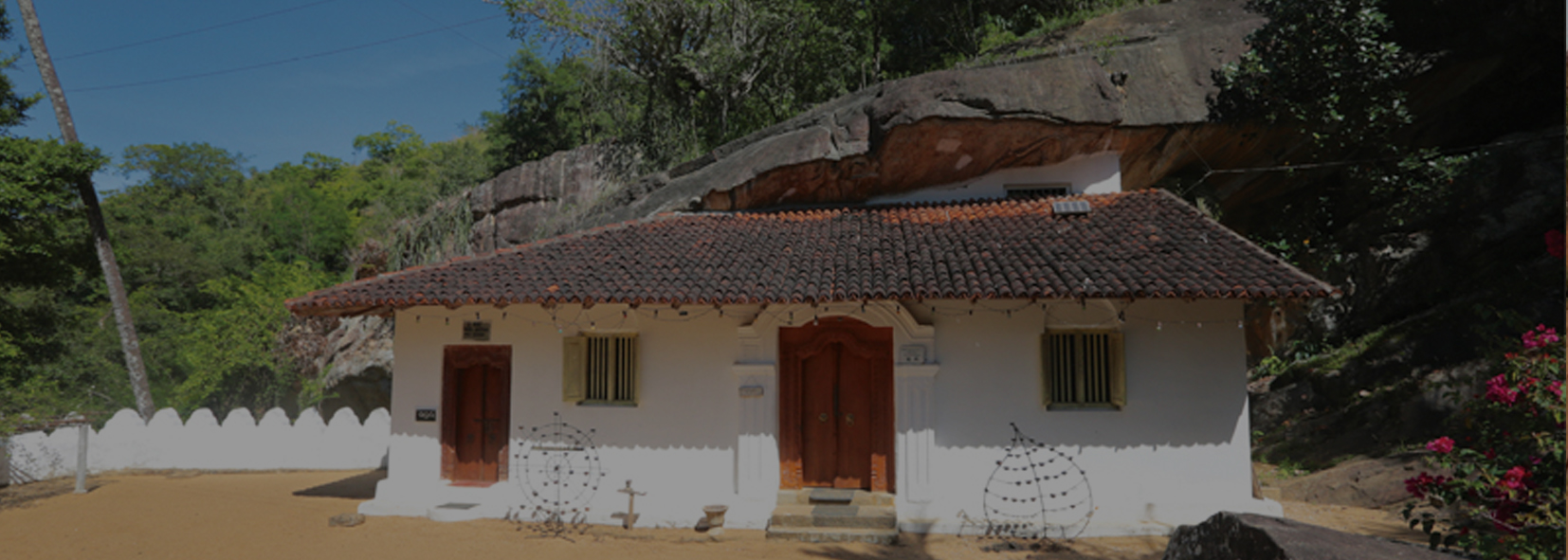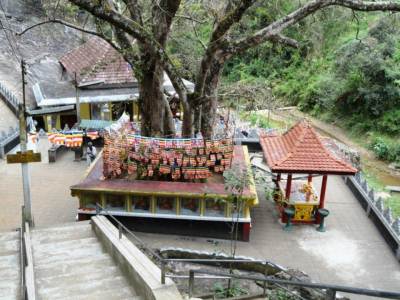Bogoda Temple
A stone inscription by the temple in Brahmin scripture says the drip-ledged cave behind the temple was donated to a priest called Brahmadatta by Tissa, a provincial leader in Badulla. King Valagamba in exile from Indian invaders had sought refuge here for two and a half years. Behind the temple by the drip-ledged cave is the entrance to a tunnel. It is very dark, bat-infested and wet that one cannot really venture in more than a few metres. The tunnel ends in a near-by estate called Tudumale. From that end one can travel about500 metres into the cave. According to history the tunnel measures 12 miles and ends at Naranwala which is now the estate.
The Vishnu Devale had existed before the temple was constructed. The standing statue of a blue God Vishnu is now partially covered by a wall built separating the cave into two chambers. A large statue of the reclining Buddha in Samadhi posture with an elaborate Makara Thorana (a dragon-like mythical creature combining features of elephant, bear, lion and crocodile)over it and a standing Buddha are also old statues dating even before the Vihara.
This Makara Thorana is an unusual structure. It shows the Makara in a different posture from the conventional one in other ancient temples. This is the only temple where the mouth and trunk of the dragon is not depicted sideways but facing and directly above the statue. It is our duty to protect and appreciate these types of magnificent creations.
Text Source :
http://archives.sundayobserver.lk/2015/03/15/jun04.asp




